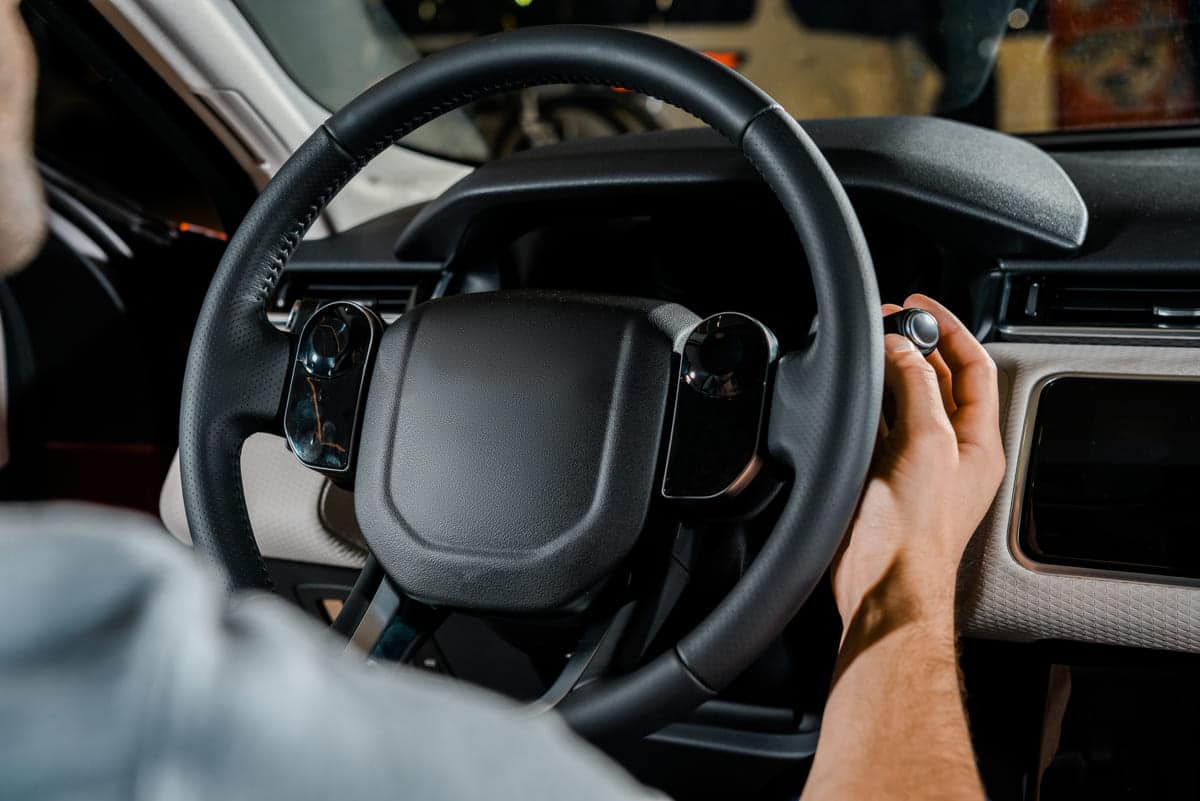Power steering uses hydraulic or electric components to amplify your input. It takes the strain out of steering, especially in tight spots or when parking, for a smoother and more responsive drive.
What Is Power Steering?
Power steering makes steering the easy. It uses hydraulic or electric power to help you.
In a hydraulic system, fluid pressure boosts the steering mechanism. This makes it smoother and less tiring at low speeds.
Electric power steering uses an electric motor. The motor helps based on your input, for precise control and better fuel economy.
Both make driving safer and more comfortable. They help in emergency situations by making it easier to steer the car.
- Power Steering. Retrieved from
- Britannica: Power Steering. Retrieved from
What is the History of Power Steering?
Power steering has a long history dating back to the end of the 19th century. In 1876, a man named Fitts invented the first power steering system. But it wasn’t popular yet.
In 1926, Francis W. Davis, an engineer, created a practical hydraulic power steering system. He worked for the Pierce-Arrow Motor Car Company and built the first working model.
In 1951, Chrysler was the first to offer power steering in their cars. They called it “Hydraguide”. It made driving much easier and safer.
By the 60s, most car makers had power steering in their vehicles. It became standard in many cars and improved driver comfort and control.
Today, power steering has evolved to advanced systems like electric power steering which is even more efficient and reliable.
- History of Power Steering. Retrieved from
- Car and Driver: Power Steering. Retrieved from
What are the Known Types of Power Steering?
Power steering makes steering easier by reducing the effort to turn the wheel. There are three types of power steering: hydraulic, electric, and electro-hydraulic.
Hydraulic Power Steering (HPS)
Hydraulic power steering uses fluid pressure to turn the wheels. A pump driven by the moves the hydraulic fluid through the system. This extra force makes steering smoother and more manageable.
Electric Power Steering (EPS)
Electric power steering uses an electric motor instead of hydraulic fluid. Sensors detect the driver’s input and the motor helps. EPS is more efficient and doesn’t need engine power like HPS.
Electro-Hydraulic Power Steering (EHPS)
Electro-hydraulic power steering combines electric and hydraulic systems. An electric motor assists in driving the hydraulic pump, offering the benefits of both systems.
- Family Handyman: Types of Power Steering Systems. Retrieved from
- GoMechanic: Power Steering and Its Types. Retrieved from
How Does Power Steering Work?
Power steering makes steering easier. Let’s break it down step by step:
Steering Wheel Input
When you turn the , it sends a signal to the power steering system. This movement starts the process of helping your steering effort.
Sensors Detect Movement
In electric systems, sensors detect the amount and direction of your steering input. In hydraulic systems, the steering input moves a valve that controls fluid flow.
Hydraulic or Electric Assistance
- Hydraulic Systems: A pump driven by the engine sends pressurized fluid to help turn the wheels.
- Electric Systems: An electric motor provides the necessary force to aid in turning.
Steering Gear Activation
The hydraulic fluid or electric motor moves the steering gear. The gear is connected to the wheels and helps them turn.
Wheels Turn
With the help, the steering gear turns the wheels smoothly and easily. This makes steering the vehicle much easier, especially at low speeds or when parking.
Feedback Loop
In electric systems, feedback sensors monitor steering conditions continuously. They adjust the assist level based on speed and steering effort, for better control and performance.
Through this process, the power steering system makes driving more comfortable and safe, so drivers can steer their vehicles.
- ACKO: How Does Power Steering Work?. Retrieved from
- HowStuffWorks: Steering Systems. Retrieved from
How Often Does Power Steering Need Maintenance?
Your power steering system, though essential for the vehicle’s performance, is a delicate system and needs to be serviced by a professional. You should check the fluid regularly to ensure it’s full, and your filter should be changed every year. When required, your steering system fluid will need to be flushed and replaced.
Symptoms of Power Steering Needs Service
- Whining Noise While Turning: If you hear a whining noise when you turn the steering wheel, the power steering fluid is low or there’s an issue with the pump.
- Difficulty in Steering: If you find it hard to turn the steering wheel, it means there’s an issue with your power steering system and it needs to be attended to immediately.
- Fluid Leaks: Look for red liquid under your car. It means power steering fluid leak and needs to be serviced ASAP.
Regular maintenance will keep your power steering system in good condition, and driving will be smooth and safe.
- Marietta Wrecker: Power Steering Maintenance. Retrieved from
- Mall of Georgia Ford: Power Steering Fluid. Retrieved from https://www.mallofgeorgiaford.com/blog/2018/november/30/how-often-do-you-add-power-steering-fluid.htm
Additional Tips for Maintaining Your Power Steering:
Maintaining your power steering properly will extend its life and driving will be smoother. Besides regular checks, here are more tips to keep your power steering in good condition:
- Check Fluid Regularly
- Use the Correct Fluid
- Inspect for Leaks
- Listen for Noises
- Avoid Overturning the Wheel
- Schedule Professional Inspections
- Keep the System Clean
Following these tips will help keep your power steering system in good condition and ensure a smoother driving experience.


